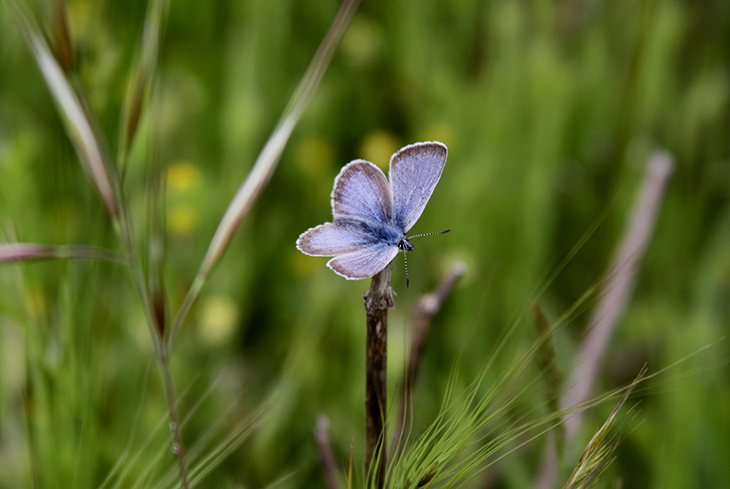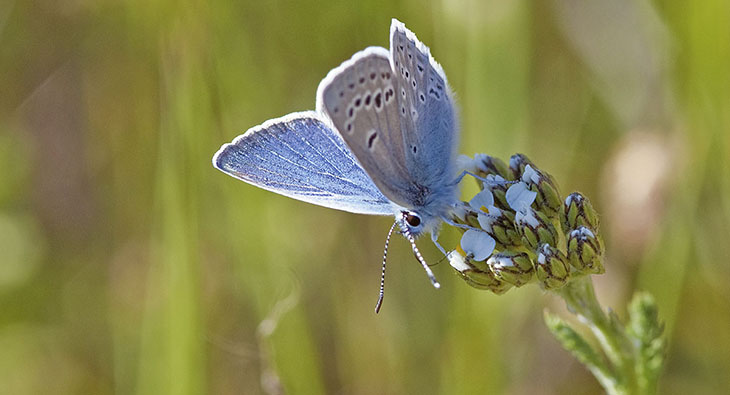
They say that Mother Nature works hard to keep the perfect balance between species. The disappearance of one could be detrimental to another. Hence, there needs to be awareness, especially for those who don’t think much about the environment.
Bands of people are now working together to make sure that different types of species get the protection they need. The efforts for many of these groups have certainly paid off because they’ve seen other animals thrive as a result of their efforts.
In the Willamette Valley of Oregon, a long study of a butterfly that many have assumed to have been long gone has led to a beautiful domino effect in terms of conservation in a cultivated region that has been in cultivation.
The conservation work, as well as the efforts to help other species, has been extremely successful that the Fender’s blue butterfly is on the list to be downlisted from Endangered to Threatened on the Endangered Species List. This is only the second time in history that an insect has made such an amazing recuperation.
In order to live and thrive through its nectar-drinking existence in the upland prairie ecosystem in northwest Oregon, the Fender’s blue is highly reliant on the help of the other creatures, included here are people, as well as ants, and a specific species of lupine.
The Fender’s blue was first rediscovered in the 1980s, 50 years it was declared extinct. The scientists realized that they had to cast their net at a wider area make sure that the butterflies survive. They continue to work on restoring these upland ecosystems and get them back to their pre-colonial state. In order to do so, they needed to welcome indigenous knowledge back and spread the Kincaid lupine around the Willamette Valley.
The Fender’s blue had been first collected in 1929. After that, they had disappeared for decades. By the time the scientists came across one of them again, they rediscovered that only 3,400 or so were in existence, which had been alarming. Back then, a lot of the Willamette Valley that was its home had been converted to farming on the lowland prairie, and grazing over its slopes and buttes.
Now, the numbers have quadrupled. This is because of a recovery plan enacted by the Fish and Wildlife Service. This act targeted the revival at scale of Kincaid’s lupine, which is a perennial flower that is just as rare as the butterfly. The lupines are grown in large groups masse by the inmates of correctional facility programs that teach green-thumb skills to its people in order to ready them when they rejoin society. Since then, these sensitive and difficult to maintain flowers have increased in numbers.
In order for the lupines to thrive, they need to be grown in an upland prairie that’s difficult to find in the valley. This was where they once flourished with the help of the native Kalapuya people’s regular cultural burning of the land.

While burning a meadow seems illogical, this does help increase numbers of flowers and butterflies, grasses and forbs. Without such a thing, they may become too dense. The fine soil that builds through time eventually become the perfect land for woody shrubs, trees, and thus, the demise of the grassland.
Fender’s blue caterpillars produce some nectar. This is what the ants in the area eat. Through time, the relationship has evolved into a co-dependent relationship. The ants that feed on them protect the caterpillars. High grasses and woody shrubs, on the other hand, prevent these insects from finding the caterpillars, who become prey for the other insects.
Now, the Confederated Tribes of Grand Ronde are being welcomed back to settle onto these prairie landscapes so that they can go back to practicing their burning practices. After the FWS found out that closely managing the grasslands by removing invasive species and keeping the grass short enabled these rare the lupines to grow and flourish.
They were able to bring back the lupines by investing their sweat and fire. As a result, the butterflies have also come back and now, more than 10,000 of them live on the Willamette Valley.
What are your thoughts? Please comment below and share this news!
True Activist / Report a typo


